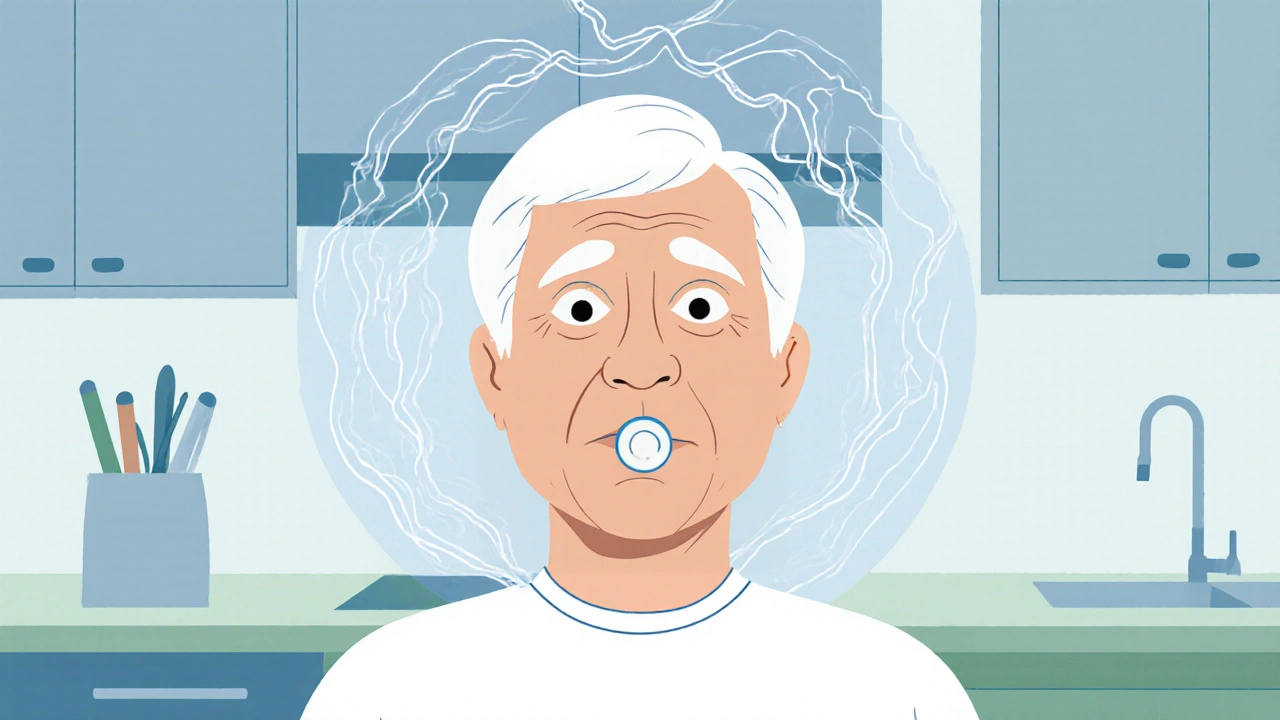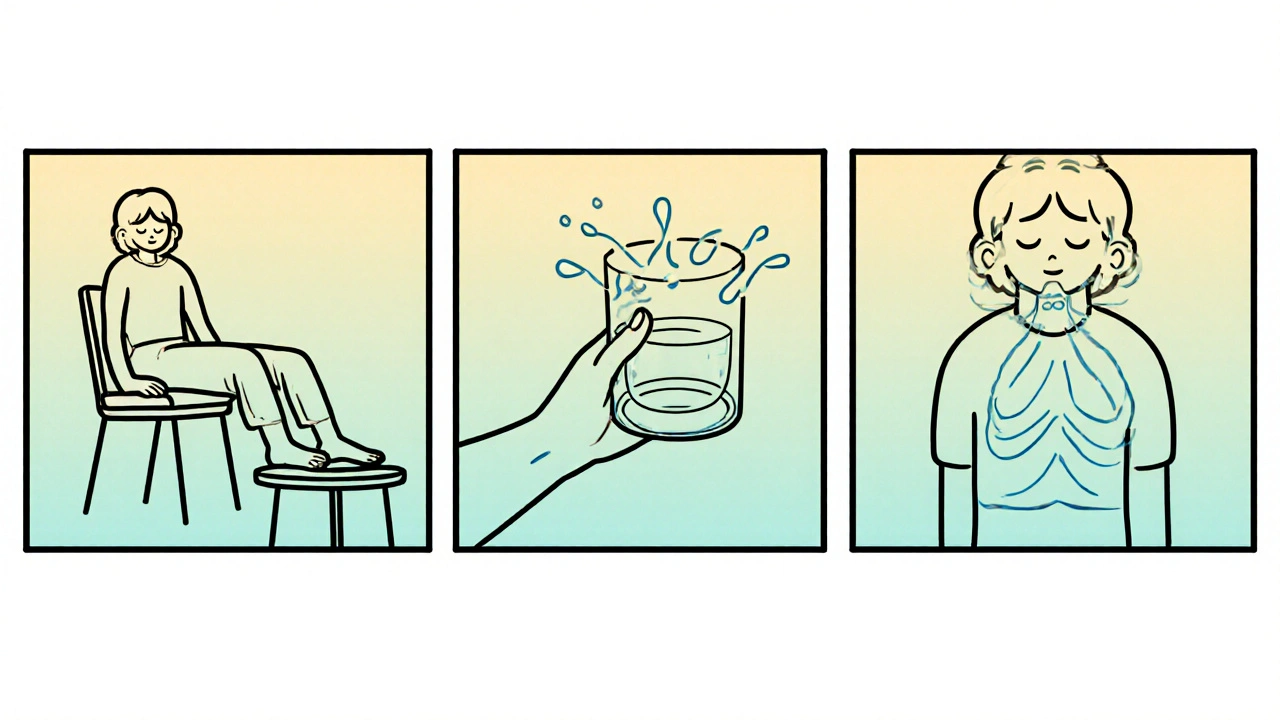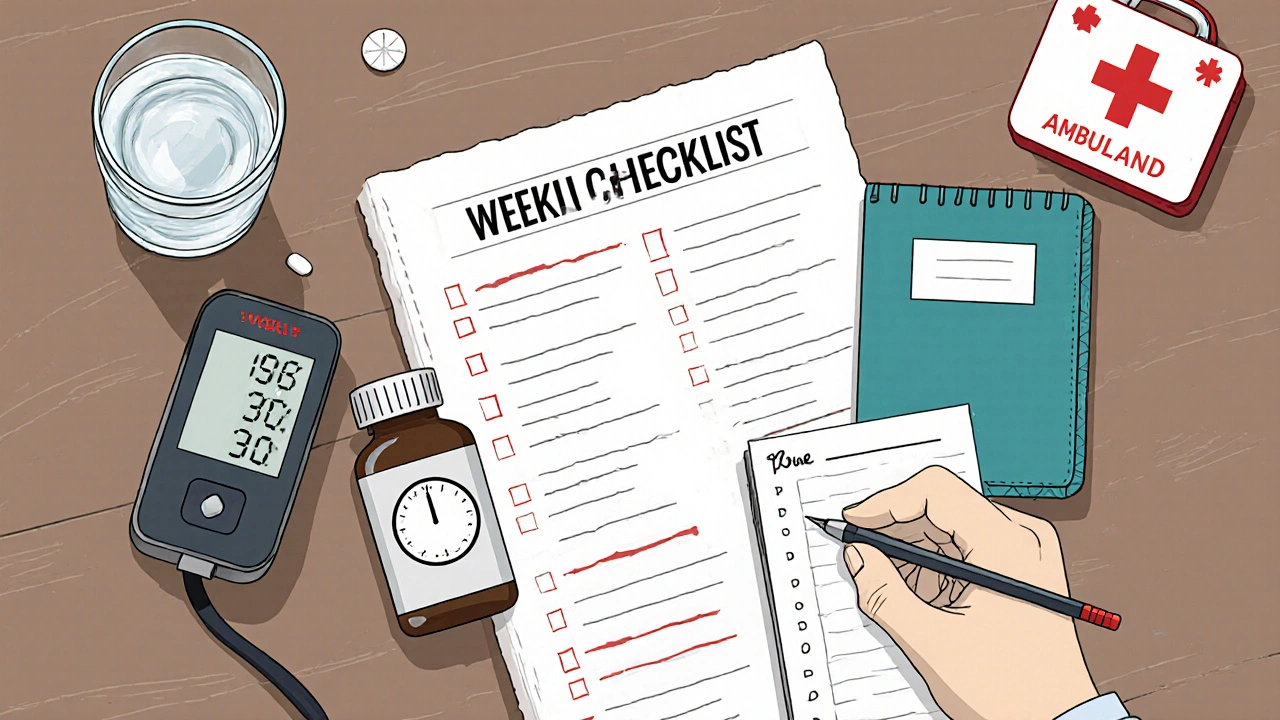
Key Takeaways
- Feeling light‑headed on nifedipine is usually tied to a drop in blood pressure.
- Slow‑rise moves, hydration and avoiding sudden position changes can cut episodes in half.
- Talk to your doctor before changing the dose; a small tweak often solves the problem.
- Watch for other medicines that also lower blood pressure - they can stack the effect.
- Seek urgent care if dizziness comes with chest pain, fainting, or severe headache.
Many people on nifedipine notice a brief spell of dizziness, especially when they first start the drug or after a dose change. The good news? Most cases are predictable and easy to manage with a few practical steps. Below you’ll find a clear roadmap that explains why the wobble happens, who’s most likely to feel it, and exactly what you can do right now and over the long run to keep it under control.
What is Nifedipine?
Nifedipine is a calcium channel blocker prescribed mainly for high blood pressure (hypertension) and chest‑pain (angina). By relaxing the smooth muscle in blood‑vessel walls, it lets blood flow more easily, which lowers the pressure the heart has to pump against. The drug comes in short‑acting tablets, extended‑release capsules, and a transdermal patch, giving doctors flexibility to match a patient’s rhythm.
Why does Dizziness happen?
Dizziness isn’t a disease; it’s a symptom that can stem from many sources. With nifedipine, the most common trigger is an abrupt dip in blood pressure, especially when you stand up quickly. This is called orthostatic hypotension. When the brain receives less blood for a split second, you feel light‑headed or unsteady.
Other contributors include dehydration, a high‑dose start, or mixing nifedipine with another medication that also expands blood vessels (think certain diuretics or beta‑blockers). The body’s natural reflexes usually correct the dip within seconds, but if the drop is steep or sustained, the sensation can linger.
Who is most at risk?
Not everyone on nifedipine will feel woozy. The following groups tend to notice it more often:
- Older adults - the blood‑pressure regulation system naturally slows with age.
- People starting at a high dose or taking the short‑acting form.
- Those who drink little water or follow very low‑salt diets.
- Patients on multiple blood‑pressure‑lowering drugs, such as beta‑blockers or certain diuretics.
- Individuals with underlying heart rhythm problems or autonomic nervous‑system disorders.

Quick actions: What to do the moment you feel dizzy
- Stop what you’re doing and sit or lie down immediately.
- Place your feet flat on the floor or elevate your legs to boost blood return to the heart.
- Take slow, deep breaths - hyperventilating can worsen the feeling.
- If you’re standing, move to a seated position before attempting to stand again.
- Drink a glass of water; a small fluid boost can raise blood volume quickly.
These steps take less than a minute and often make the dizziness fade.
Long‑term strategies to keep dizziness at bay
Beyond the instant fixes, there are several habits you can adopt that reduce the frequency and intensity of episodes.
- Hydration: Aim for at least 1.5‑2 L of water daily unless your doctor says otherwise.
- Salt intake: For most patients, a modest amount of sodium (around 1500‑2000 mg per day) helps maintain blood‑pressure stability. Talk to your healthcare team before making big changes.
- Rise slowly: When getting out of bed, sit on the edge for a minute, then swing your legs before standing.
- Exercise wisely: Light, regular aerobic activity (walking, stationary cycling) improves vascular tone without shocking the system.
- Medication timing: If you take an immediate‑release tablet, try taking it with food to slow absorption.
- Review your drug list: Bring a current list to every doctor's visit. A pharmacist can spot interactions you might miss.
When to call your doctor-or head to urgent care
Most dizzy spells are harmless, but certain signs mean you need professional help right away:
- Fainting or loss of consciousness.
- Chest pain, shortness of breath, or palpitations.
- Severe headache that feels different from a migraine.
- Dizziness that lasts longer than a few minutes despite sitting down.
- New neurological symptoms - blurry vision, slurred speech, or weakness on one side.
If any of these appear, treat it like an emergency. Call 000 (Australia) or go to the nearest emergency department.

Common drug interactions that can amplify dizziness
Some medicines have a additive effect on blood‑pressure reduction. Below are the usual suspects:
- ACE inhibitors (e.g., lisinopril, enalapril). \n
- ARBs (e.g., losartan, valsartan).
- diuretics (especially thiazides and loop diuretics).
- beta‑blockers (metoprolol, atenolol).
- Other calcium channel blockers (amlodipine, verapamil) - stacking them can drop pressure dramatically.
- Alcohol - even modest amounts widen blood vessels and can trigger a sudden dip.
If you’re on any of these, ask your doctor whether a dose tweak or a different schedule could help.
Quick‑reference table: Immediate vs. Preventive actions
| Situation | Immediate Action | Preventive Measure |
|---|---|---|
| Sudden light‑headedness while standing | Sit down, elevate legs, drink water | Rise slowly; keep a water bottle handy |
| Dizziness after taking a new dose | Pause activity, monitor blood pressure if you have a cuff | Ask doctor about a lower starting dose or extended‑release form |
| Recurring episodes in the evening | Avoid heavy meals or alcohol close to bedtime | Take the medication with a light snack; keep salt intake consistent |
Putting it all together: A simple weekly plan
Think of dizziness management as a habit checklist. Pick a day each week to review the following:
- Check your blood‑pressure log (if you track it).
- Verify that you’ve taken the medication at the same time each day.
- Make sure you’ve had enough fluids and a balanced salty snack if recommended.
- Update your medication list and share it with your pharmacist.
- Note any new symptoms and bring them to your next doctor’s visit.
Sticking to this routine turns a reactive response into a proactive one, and most people see a steady drop in dizzy spells within a few weeks.
Frequently Asked Questions
Can I stop nifedipine if dizziness keeps coming back?
Never stop a prescription on your own. Talk to a doctor first; they might switch you to another class (like an ACE inhibitor) or adjust the dose.
Is it safe to take over‑the‑counter antihistamines with nifedipine?
Some antihistamines (especially first‑generation ones) can cause additional blood‑pressure drops. Check with your pharmacist before combining them.
Why does the extended‑release form feel better?
Extended‑release capsules release the drug slowly, leading to steadier blood‑pressure control and fewer peaks that trigger dizziness.
Can dehydration be the main cause?
Yes. Less fluid means less blood volume, which magnifies any pressure‑lowering effect. Drinking enough water is one of the easiest fixes.
Should I reduce my salt intake if I’m already on nifedipine?
A very low‑salt diet can worsen orthostatic hypotension. Aim for a moderate amount unless your doctor advises otherwise.
Is a nifedipine dizziness diet a thing?
There’s no special diet, but the habits listed above (hydration, moderate salt, gradual movements) act like a personalized plan to keep the wobble down.


Comments
Grace Silver
I think dizziness on nifedipine is more than just a side effect it’s a signal from our bodies reminding us to move mindfully and hydrate often
Clinton Papenfus
Indeed the physiological basis you outlined aligns with established hemodynamic principles consider adjusting dosage timing to mitigate orthostatic hypotension
Melanie Vargas
Great points 🌟 staying hydrated and rising slowly are simple fixes 👏 also keep a water bottle handy during the day 💧
Deborah Galloway
Thanks for the reminder staying friendly to ourselves helps when those light‑headed moments hit
Charlie Stillwell
Honestly the literature is riddled with sloppy dosing strategies the pharmacokinetic profile of immediate‑release nifedipine can cause abrupt vascular capacitance changes which precipitates syncope 🙄 if you’re not monitoring BP you’re courting disaster 😤
Buddy Bryan
To expand on that consider measuring your seated and standing blood pressure after each dose the delta will show whether the drop exceeds 20 mmHg a practical threshold to discuss with your cardiologist and possibly switch to an extended‑release formulation
Jonah O
Did you ever notice how pharma pushes these meds without telling you about the hidden electrolyte imbalance they cause? they dont want you to read the fine print its all a cover up
Aaron Kuan
Water is the electrolyte highway your veins ride on – sip often keep the flow.